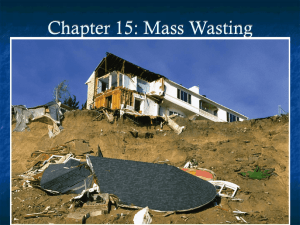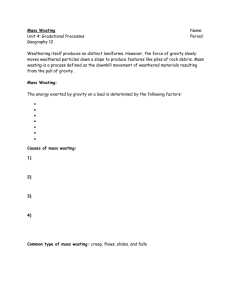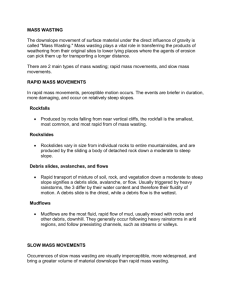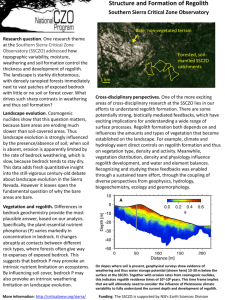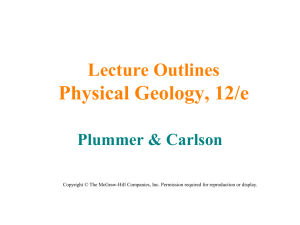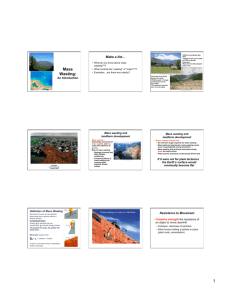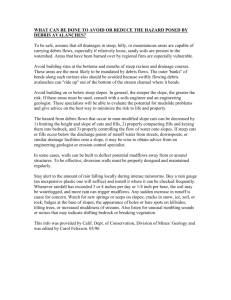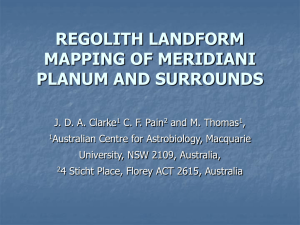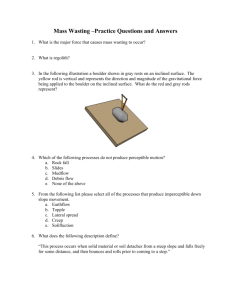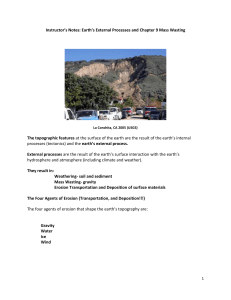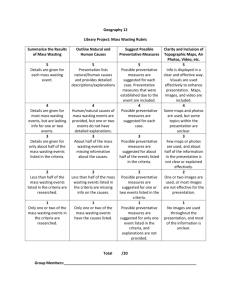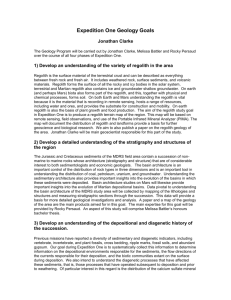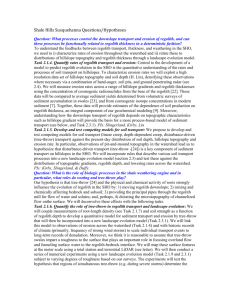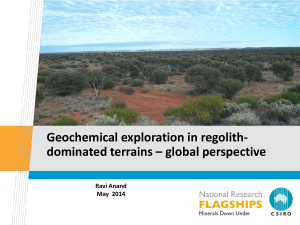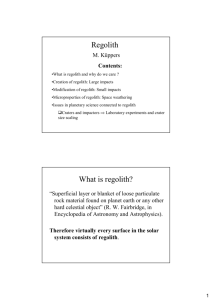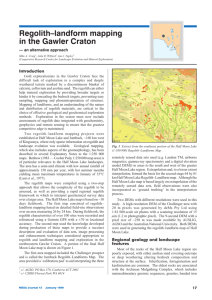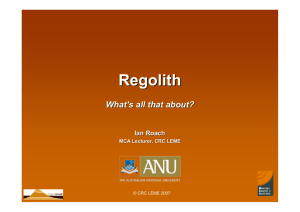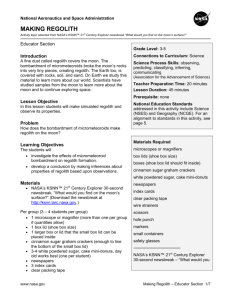Mass Wasting
advertisement
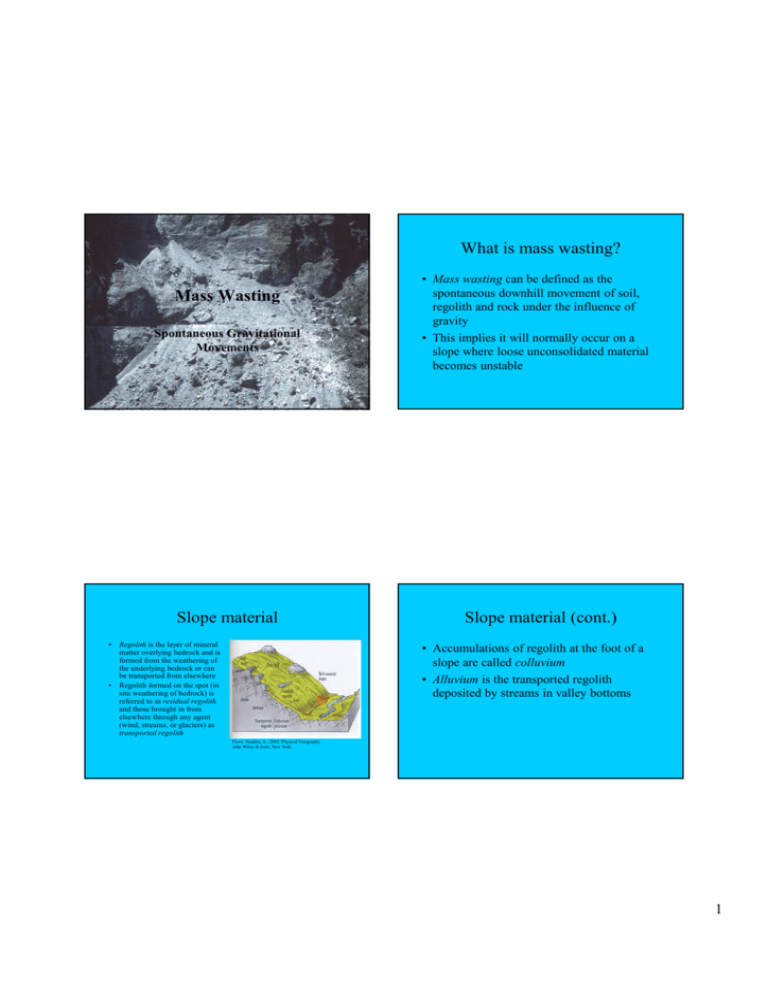
What is mass wasting? Mass Wasting Spontaneous Gravitational Movements Slope material • • Regolith is the layer of mineral matter overlying bedrock and is formed from the weathering of the underlying bedrock or can be transported from elsewhere Regolith formed on the spot (in situ weathering of bedrock) is referred to as residual regolith and those brought in from elsewhere through any agent (wind, streams, or glaciers) as transported regolith • Mass wasting can be defined as the spontaneous downhill movement of soil, regolith and rock under the influence of gravity • This implies it will normally occur on a slope where loose unconsolidated material becomes unstable Slope material (cont.) • Accumulations of regolith at the foot of a slope are called colluvium • Alluvium is the transported regolith deposited by streams in valley bottoms From: Strahler, A., 2002: Physical Geography. John Wiley & Sons, New York. 1 Mass wasting processes Processes and forms of mass wasting • Can occur through four actions 1. Free fall 2. Slides – caused by differential internal cohesion 3. Flow – caused by weak internal cohesion as well as exceeding the threshold angle of repose 4. Swelling – caused by expansion of clay or through frost action Types of mass wasting • Soil creep – extremely slow downhill movement of soil and regolith • Evidence that the process is active – Large blocks at the foot of slopes that did not roll there – Edges of strata bending in downhill direction – Fence posts and telephone poles leaning over in a downslope direction – Retaining walls leaning over and breaking outwards From: Strahler, A., 2002: Physical Geography. John Wiley & Sons, New York. Causes for soil creep • Heating and cooling of soils • Growth of frost needles • Drying and wetting of soil material (particularly the clays) • Trampling and burrowing of animals • Earthquakes 2 Types of mass wasting (cont.) • • • Earthflows – the downslope movement of a mass of watersaturated soil, regolith or clay within a few hours Earthflows are often associated with spontaneous liquefaction Spontaneous liquefaction is when a super-saturated silt or clay body takes on the characteristics of a fluid (becoming a quick clay) due to vibration caused by an earthquake Earthflow (British Columbia) Quebec, Canada, (1955) From: Strahler, A., 2002: Physical Geography. John Wiley & Sons, New York. Types of mass wasting (cont.) Periglacial features (Colorado, USA) • Solifluction is a slow moving earthflow in arctic regions with permafrost • The upper part of the permafrost starts thawing, leaving the lower part supersaturated with water that causes the movement 3 Solifluction lobes (NW Territory, Canada) Types of mass wasting (cont.) • Mudflows – are literally rivers of mud where a river mobilizes such an amount of debris that it “chokes” itself • Mudflows are common in desert areas. WHY? • Mudflows that occur on the slopes of an erupting volcano are referred to as lahars • Watery types of mudflows are called debris flows or debris floods when they consist of rock debris (angular blocks or rock fragments) Debris flood deposit (French Alps) Systems to break down debris flows 4 Debris flood damage after flash floods (Venezuela, 1999) Types of mass wasting (cont.) • Landslides are the rapid sliding of large masses of bedrock and regolith beginning their descent as a unit block without internal flowage Types of landslide • Rockslide – is a bedrock mass slipping on a sloping rock plane • Slumping - a bedrock mass moving downslope down a curved slip surface and at the same time rotating backward Types of mass wasting (cont.) • Rockfalls are free falling or rolling of single masses of rock down a steep cliff 5
